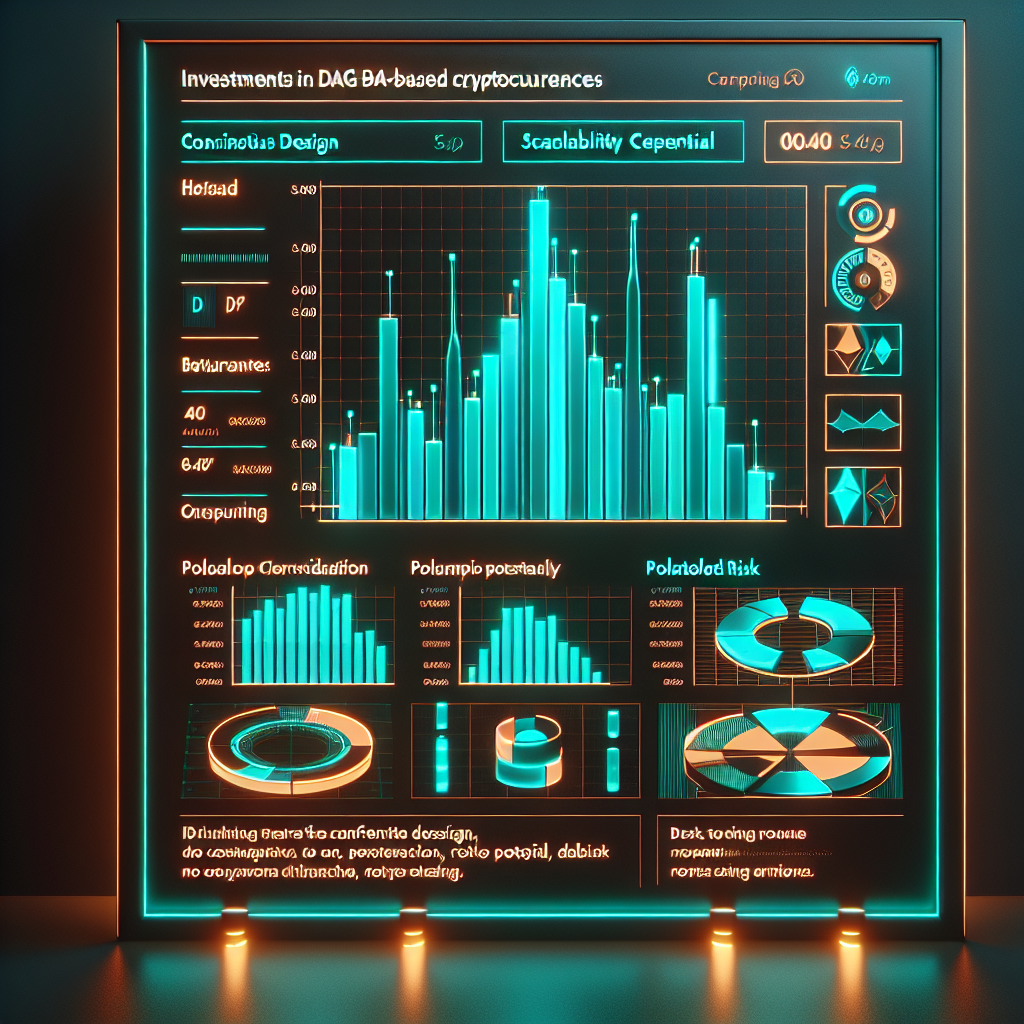Investing in DAG-Based Cryptocurrencies: Consensus Design, Scalability Potential, and Portfolio Risk Considerations

Introduction: Why Directed Acyclic Graphs Matter to Crypto Investors
Directed Acyclic Graph (DAG) architectures have emerged as one of the most talked-about alternatives to traditional blockchain designs. Instead of organizing transactions into sequential blocks, DAG networks arrange them as vertices in a graph, eliminating the need for miners and enabling parallel processing. For investors hunting for the next growth catalyst in the digital-asset space, understanding DAG-based cryptocurrencies is critical. This article explores how DAG consensus works, what it means for scalability, and how to weigh the unique risks they introduce to a diversified crypto portfolio.
What Exactly Is a DAG-Based Cryptocurrency?
A DAG-based cryptocurrency is a digital asset whose ledger data structure forms a directed graph where each transaction references one or more predecessor transactions, forming a path that never loops back on itself. Popular examples include IOTA’s Tangle, Hedera Hashgraph’s Gossip-about-Gossip, and Fantom’s Lachesis. Because there are no blocks, network throughput can, in theory, increase as more users participate, solving the bottleneck issues that plague first-generation blockchains like Bitcoin.
DAG Consensus Design: From Tangle to Hashgraph
IOTA’s Tangle
IOTA’s Tangle uses a lightweight Proof-of-Work (PoW) that each user performs when submitting a transaction. Every new transaction validates two earlier ones, distributing consensus across the network without miners or validators. This design minimizes fees and hardware requirements, making it attractive for Internet-of-Things micro-payments.
Hedera Hashgraph
Hedera introduces an asynchronous Byzantine Fault Tolerant (aBFT) consensus called Gossip-about-Gossip. Nodes randomly share signed information, and a virtual voting algorithm finalizes transactions quickly with mathematically provable fairness. The system is permissioned for now, governed by a council of global enterprises, which some investors see as a trade-off between decentralization and enterprise-grade performance.
Fantom Lachesis
Fantom’s Lachesis protocol applies a leaderless aBFT design where validators create event blocks containing hashes of earlier events. Consensus is achieved through a dynamic DAG called the OPERA chain, offering near-instant finality and compatibility with the Ethereum Virtual Machine (EVM), making it attractive for decentralized finance (DeFi).
Scalability Potential: Transaction Throughput and Network Efficiency
The most cited advantage of DAG systems is scalable throughput. Because each new transaction confirms others, network capacity theoretically grows with adoption. IOTA, for example, claims unlimited scalability as device usage rises. Hedera Hashgraph’s public mainnet has already demonstrated 10,000+ transactions per second (TPS) in test environments, dwarfing Bitcoin’s ~7 TPS and Ethereum’s ~15 TPS pre-Merge.
Energy efficiency is another dimension of scalability. DAG platforms typically avoid resource-intensive mining, resulting in lower carbon footprints and operating costs. For ESG-minded investors, this can be a compelling value proposition, especially as regulatory frameworks tighten around environmental impacts.
However, scalability claims must be taken with caution. Stress tests often occur under controlled circumstances; real-world traffic patterns, network latency, and potential spam attacks can suppress theoretical TPS ceilings. Investors should examine third-party audits, mainnet performance dashboards, and community stress-testing initiatives before assuming advertised numbers are sustainable.
Portfolio Risk Considerations: Volatility, Liquidity, and Technological Uncertainty
Market Volatility
DAG-based tokens, like most altcoins, exhibit higher volatility than established assets such as Bitcoin or Ethereum. Rapid price appreciation can quickly reverse on negative headlines, for instance, when IOTA’s network paused in 2020 due to a wallet exploit. Allocate capital proportionate to your risk tolerance and investment horizon.
Liquidity Risk
Although liquidity on top-tier exchanges has improved, order books for DAG assets remain thinner than for large-cap coins. Wide bid-ask spreads can amplify slippage, especially for sizable positions. Using limit orders and monitoring 24-hour volume are prudent steps to mitigate execution risk.
Technological and Governance Risk
Because DAG systems are younger, codebases may harbor undiscovered vulnerabilities. Hedera’s enterprise council model, while offering stability, introduces governance centralization that could clash with crypto’s open ethos. Conversely, fully permissionless DAG projects might face slower mainstream adoption due to unclear regulatory compliance pathways. Investors should track development roadmaps, bug bounty programs, and governance transparency metrics.
Regulatory Risk
Regulators worldwide continue to scrutinize crypto projects, especially those promising high throughput or novel architectures. A ruling classifying a token as a security, or mandating restrictive energy standards, can materially impact valuations. Geographic diversification of trading venues and custody solutions can help manage jurisdiction-specific shocks.
How to Evaluate a DAG Coin Before Buying
1. White Paper and Technical Documentation: Read the consensus algorithm description and evaluate peer-reviewed citations. 2. Development Activity: Check GitHub commits, roadmap milestones, and grant programs. Active repos signal ongoing innovation and bug fixes. 3. Tokenomics: Analyze supply schedules, staking rewards, and emissions. Excessive token unlocks may dilute value. 4. Partnerships and Ecosystem: Look for enterprise pilots, DeFi integrations, or IoT deployments. Real-world usage supports demand. 5. Community and Governance: Vibrant forums and transparent improvement proposals indicate resilient project culture.
Diversifying Your Crypto Portfolio With DAG Assets
DAG-based cryptocurrencies can complement a balanced crypto portfolio by offering exposure to alternative scalability solutions beyond Layer-2s or sharded blockchains. Allocating a small percentage—say, 3–8% depending on risk appetite—can capture upside from network effects if DAG architectures gain mainstream traction. Pairing them with established assets provides a hedge against project-specific failures.
Practical Tips for Entering a Position
• Dollar-Cost Average (DCA): Spread purchases over weeks to smooth entry price.
• Use Reputable Custody: Hardware wallets that support DAG coins or exchange custody with insurance coverage.
• Monitor Network Health: Track TPS, node count, and community sentiment via analytics dashboards.
• Set Exit Rules: Predetermine profit targets and stop-loss levels to counter emotional decision-making.
Conclusion: Balancing Promise and Prudence
DAG-based cryptocurrencies represent a bold attempt to overcome blockchain’s scalability trilemma—balancing throughput, security, and decentralization. Their innovative consensus designs can, in theory, process magnitudes more transactions at lower cost and energy consumption. Yet, alongside opportunity comes heightened technological, governance, and liquidity risks. By performing rigorous due diligence, sizing positions appropriately, and monitoring evolving regulatory landscapes, investors can harness the potential of DAG networks while safeguarding their overall portfolio health.